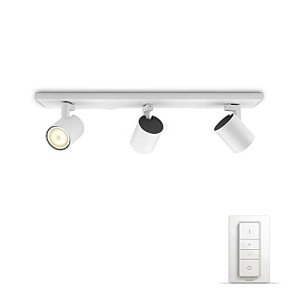Contemporary Lighting in the UK: Transforming Spaces with Illumination
Lighting plays an important function in specifying the ambiance and performance of any area. In the UK, contemporary lighting has actually become a significant style component, providing ingenious solutions that blend aesthetics with practicality. This post dives into the different designs, materials, and technologies shaping contemporary lighting, in addition to pointers for choosing the most ideal fixtures for various settings.
The Evolution of Contemporary Lighting
Contemporary lighting in the UK shows the altering tastes and technological advancements in style. It encapsulates a large array of styles, consisting of:
- Minimalist: Characterized by simplicity and tidy lines, minimalist lighting fixtures concentrate on kind and function without unneeded embellishments.
- Industrial: Inspired by metropolitan settings, industrial lighting integrates raw products like metals and woods with vibrant designs, creating edgy, functional pieces.
- Scandinavian: Known for its warmth and simpleness, Scandinavian lighting often includes soft colors and natural products, focusing on developing a cozy environment.
- Smart Lighting: This modern trend integrates technology with design, permitting users to manage their lighting with mobile apps, voice commands, or automation systems.
To show the advancement and variety in the field of contemporary lighting, think about the table listed below, which highlights essential qualities of different styles.
| Design | Secret Characteristics | Popular Materials | Perfect Spaces |
|---|---|---|---|
| Minimalist | Basic, practical styles | Metal, glass, wood | Modern homes, workplaces |
| Industrial | Raw, unfinished look | Steel, concrete, wood | Lofts, galleries |
| Scandinavian | Relaxing, warm visual appeals | Natural fibers, light wood | Living rooms, cafes |
| Smart | Integrated innovation, automation | Differs widely | Houses, offices, retail spaces |
Picking Contemporary Lighting Fixtures
Picking the best lighting fixtures for a space needs mindful consideration of a number of factors. Here are crucial elements to remember:
1. Purpose of the Space
Before picking fixtures, think about the desired usage of the area. Different functions need different types of lighting:
- Task Lighting: Focused illumination for activities such as reading, cooking, or studying. Modern Lamps UK consist of table lamps and under-cabinet lights.
- Ambient Lighting: General lighting that offers overall lighting. Ceiling lights and pendant fixtures fall under this classification.
- Accent Lighting: Designed to highlight specific functions or locations, such as artwork or architectural information. Wall sconces and mounted lights are common options.
2. Design and Theme
The lighting should match the existing decor. Select fixtures that match or enhance the total style of the area, whether it's contemporary, rustic, or eclectic.
3. Size and Scale
Think about the proportion of the lighting fixtures relative to the area. A large chandelier might look sensational above a roomy dining table, while smaller sized pendant easy work well in compact settings.
4. Energy Efficiency
With increasing energy costs and environmental issues, choosing energy-efficient lighting alternatives is essential. LED lights are an excellent option, using longevity and lower energy usage.
5. Flexibility
In modern style, adaptability is key. Fixtures that can be adjusted or repositioned boost functionality, permitting users to develop different atmospheres as required.
Popular Contemporary Lighting Brands in the UK
The contemporary lighting market in the UK boasts numerous brand names known for their ingenious styles and quality workmanship. Some notable points out include:
- FLOS: An Italian brand name commemorated for its artistic and renowned lights that frequently function as art pieces.
- Tom Dixon: A British designer acknowledged for his modern, industrial designs that wonderfully incorporate metal and light.
- Anglepoise: Known for its versatile, functional lamps, ideal for a range of settings from office to creative studios.
- John Lewis: Offers a range of contemporary lighting options that cater to a more comprehensive audience, consisting of affordable yet trendy options.
Frequently Asked Questions about Contemporary Lighting in the UK
1. What is contemporary lighting?
Contemporary lighting refers to lighting designs and fixtures that reflect present style patterns, typically characterized by clean lines, innovative shapes, and the usage of modern products and technologies.
2. How do I select the best lighting for my home?
Think about the function of the room, existing decoration, size of fixtures, energy effectiveness, and flexibility. Examine how each piece will add to the general ambiance and performance of your area.
3. What are some energy-efficient lighting options readily available in the UK?
LED lights are the most popular energy-efficient choice, known for their long life-span and low energy usage. Compact fluorescent lights (CFLs) and halogen bulbs are other alternatives.
4. Where can I buy contemporary lighting in the UK?
Contemporary lighting can be discovered in numerous retail outlets, both online and in physical stores. Notable sellers consist of John Lewis, Habitat, and specialized lighting stores.
5. Can contemporary lighting operate in traditional areas?
Definitely! Contemporary lighting can enhance traditional spaces when selected attentively. Picking fixtures with a balance in between modern and classic components can produce an unified design.
Contemporary lighting in the UK represents more than simply lighting; it embodies style innovation and imagination, transforming areas and improving performance. As patterns continue to evolve, homeowners and designers alike can check out an extensive variety of styles and technologies, making sure that every room bursts with life, heat, and character. By thinking about the necessary elements outlined in this article, one can curate a collection of lighting fixtures that resonates with personal style and satisfies practical needs, ultimately shaping comfortable and visually enticing environments.

